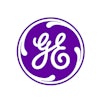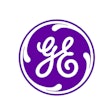The phoenix was a mythical bird that the ancients believed resurrected itself after a fiery demise. But even the phoenix had nothing on healthcare IT firm Merge Healthcare, which is now on its second resurrection in recent years after an accounting scandal derailed the firm in 2006.
Merge executives say the company's latest resurgence is the real deal, with the firm posting four straight profitable quarters and a rebounding stock price since a new management team took over in June 2008. The Milwaukee firm has even hit the acquisition path, announcing a pair of deals in recent months.
But will the recovery stick? Some PACS industry observers are still wary of a company that has promised recovery in the past but then failed to deliver. But Merge management says that this time things are different.
A connectivity pioneer
Merge is one of the most venerable names in digital image management, having been launched in 1987 as a provider of data connectivity products and services to OEMs. Over the years, the company expanded its portfolio into advanced visualization, RIS, and PACS through a number of acquisitions, such as eFilm Medical in 2002, RIS Logic in 2003, and AccuImage Diagnostics in 2005. Its biggest deal, Cedara Software, came in 2005 and gave the firm access not only to Cedara's line of PACS and 3D software but also the Canadian firm's OEM software development business.
But things began to go astray not long after the Cedara acquisition. In February 2006, Merge announced that it would delay its quarterly financial results, and eventually the firm restated its results from 2002 through 2005. The move that sparked a series of shareholder lawsuits, delisting notifications, and declining confidence from potential customers.
By the 2006 RSNA show, Merge was claiming to be on the comeback trail, but the Deficit Reduction Act of 2005 derailed the firm's resurgence, and losses continued into 2007. By early 2008, Merge was experiencing staff layoffs, more delisting notifications, another financial restatement, and, finally, a going-concern notice from its auditors.
At the same time, Merge launched several strategic initiatives that raised eyebrows in the PACS industry. One was the outsourcing of 150 engineering jobs to India, and another was the launch of a teleradiology service that would use Indian radiologists to provide preliminary overreads of imaging studies -- potentially competing with Merge's own end-user customers. The company also said it would back away from an effort to expand internationally in China, Europe, and the Middle East, and recently opened sales offices in those regions would be closed or sold to local management.
New blood
Things came to a head in May 2008 as the company ran low on cash. Soon after saying it was pursuing "strategic options," it found a white knight in the form of investment firm Merrick RIS, which invested $20 million in Merge. Merrick brought in its own executive team and replaced five of Merge's 11 board members as a condition of the deal.
One of those executives was Justin Dearborn, who was named CEO of the company. In addition to serving as managing director of Merrick's Merrick Ventures affiliate, Dearborn served six years at Click Commerce, a Chicago-based provider of business application software and services.
Despite Merge's dire straits, Merrick saw in Merge a company with a number of positive attributes, Dearborn said. These included a stable of well-regarded software applications and an installed base of customers who for the most part remained loyal throughout the firm's travails.
"We liked the fact that customer attrition was low and the products were strong," Dearborn said.
Dearborn and other members of the new team began reshaping the company. One of the first things to go was the Indian teleradiology venture, which was shut down shortly after Merrick took over. The company also shut down the Indian software engineering office -- rising labor costs for Indian engineers and the difficulty of managing employees across multiple time zones had made that effort less attractive, Dearborn said.
Merge also shaved R&D and engineering costs by ending support for a number of products that the company hadn't sold in years, such as software derived from the AccuImage acquisition. It also promoted a number of midlevel managers who had been with the company for a number of years to replace the senior management team let go after the Merrick investment.
Finally, Merge reversed the decision to eliminate international sales and marketing offices and reacquired a sales office in China that had been sold off by the previous management. Merge sees international expansion as a major component of the company's growth plan and felt that maintaining the offices is key to the company's overall strategy, Dearborn said.
Recovery and growth
The new efforts soon began to show results. The company regained compliance with Nasdaq listing requirements in July 2008, and it posted 3% growth in sales and a net profit for its third quarter of that year (end-September 30), the first full reporting period under the new management. Since then, Merge has posted four straight profitable quarters as revenues inch upward.
Merge revenues and net income, Q2 2008 to Q2 2009
|
Lower costs are a major part of the company's recovery story. In financial results for the first six months of 2009, Merge's general and administrative costs were $5.4 million, compared with $14.6 million in the first half of 2008, while year-to-date product R&D costs dropped from $8.2 million to $4.8 million over the same time periods.
The lower R&D spending won't affect Merge's future product pipeline, Dearborn said, as the 2008 numbers reflect the higher spending involved in building and then winding down the Indian software engineering effort, among other factors. Merge's R&D costs at one time were 30% to 40% of revenues, a number that's unsustainable for any profitable business, he added. Now, the company's R&D spending is running in line or slightly higher than the industry average.
Merge's recovery comes in the midst of an economic slowdown that has hammered many imaging companies as hospitals put the brakes on capital equipment spending. Merge has adjusted its strategy in response, using more flexible pricing strategies such as reducing the minimum commitment it requires from OEM customers for software development projects. For end users, Merge now offers its software on a pay-per-study model, a first for the company.
The firm also sees a significant upside to its international business, Dearborn said, with Europe, the Middle East, and the rest of the world showing strength. International markets went into the recession later and appear to be recovering earlier, he said.
New acquisitions
As the company's financial footing stabilizes, it has embarked upon the acquisition path again, purchasing clinical trials software firm etrials Worldwide in July and announcing a $22 million bid for MRI computer-aided detection (CAD) developer Confirma of Bellevue, WA, in August. Merge has formed a new clinical trials division made up of the etrials business, called Merge eClinical, to handle what it sees as the growing intersection between clinical trials and the need for imaging to track study results. The company is even debating whether to set up a network of its end-user customers to read images collected during clinical trials, Dearborn said.
With respect to Confirma, Merge sees a good fit between that company's breast and liver MRI CAD product portfolio and Merge's own offerings in the advanced visualization space. Confirma's shift to an exclusively OEM strategy a year ago also interfaces well with Merge's contract software development business.
In the long term, Merge is looking to expand outside of radiology and into the broader healthcare IT market, signing a deal in August with Allscripts of Chicago to integrate its Cedara WebAccess software with Allscripts' electronic health record application for distributing medical images and reports. The pending arrival of federal stimulus money for healthcare IT projects makes this market even more attractive.
The company sees its roots in data connectivity as a benefit as healthcare seeks to integrate disparate software systems, from RIS and PACS to electronic medical records.
"We are unique in that we started at the core of interoperability of medical imaging. We were the connectivity plumbers," said Julie Pekarek, chief marketing officer at Merge. "As the industry needs connectivity at a broader level, we can go back and say, 'That's the core of who we were at the start.' "
Merge still has its detractors, as denizens of several Internet bulletin boards question whether the firm's progress is genuine. But Dearborn says that a year into the company's recovery, potential customers rarely ask about the firm's financial stability -- a track record that's reflected in the firm's stock price, which toward the end of August was trading at around $3.50 a share, after closing as low as 41¢ in November. The stock's price-earnings ratio is at the high end of similar firms in the healthcare IT space, he said.
"We are trading at top multiples in our sector," Dearborn said. "We're getting credit from the public markets for running a good business."
By Brian Casey
AuntMinnie.com staff writer
September 2, 2009
Related Reading
Merge completes HealthPartners install, August 13, 2009
Merge to buy MRI CAD software firm Confirma, August 7, 2009
Merge opens up software for development, August 5, 2009
Merge inks Allscripts deal, August 3, 2009
Merge enjoys Q2 gains, July 30, 2009
Copyright © 2009 AuntMinnie.com



















